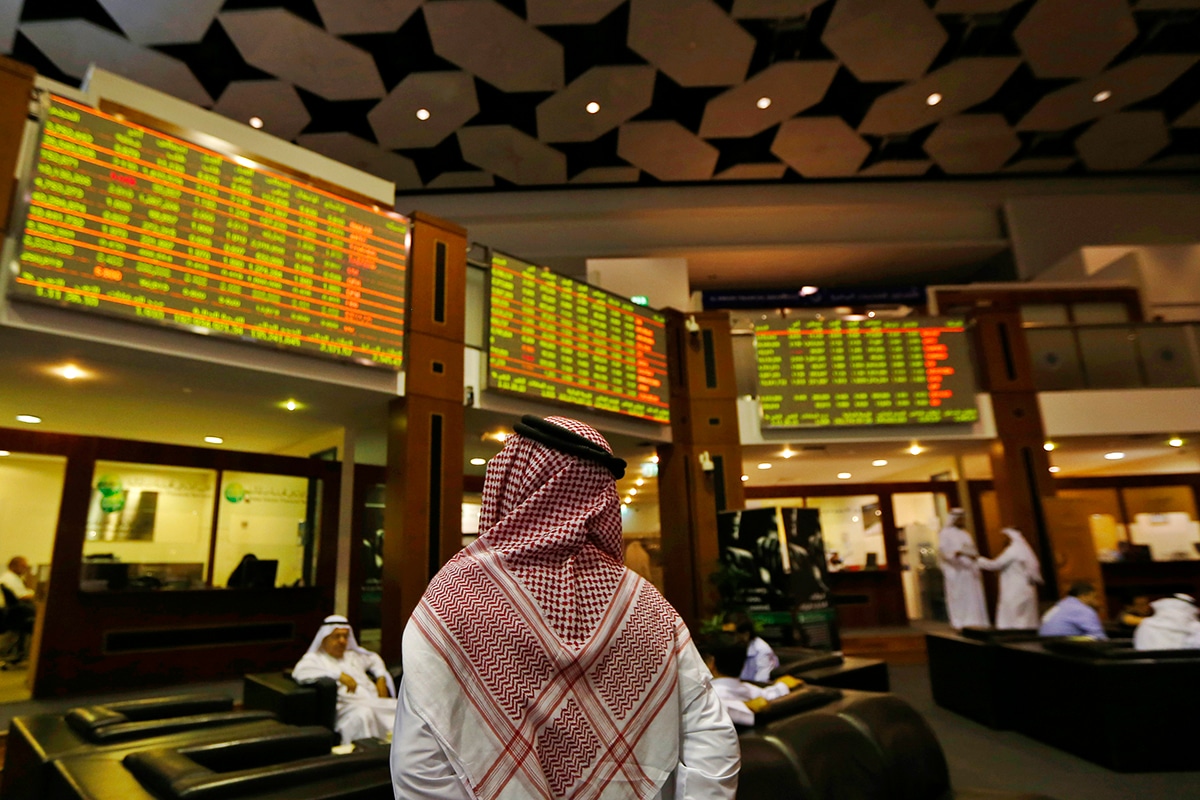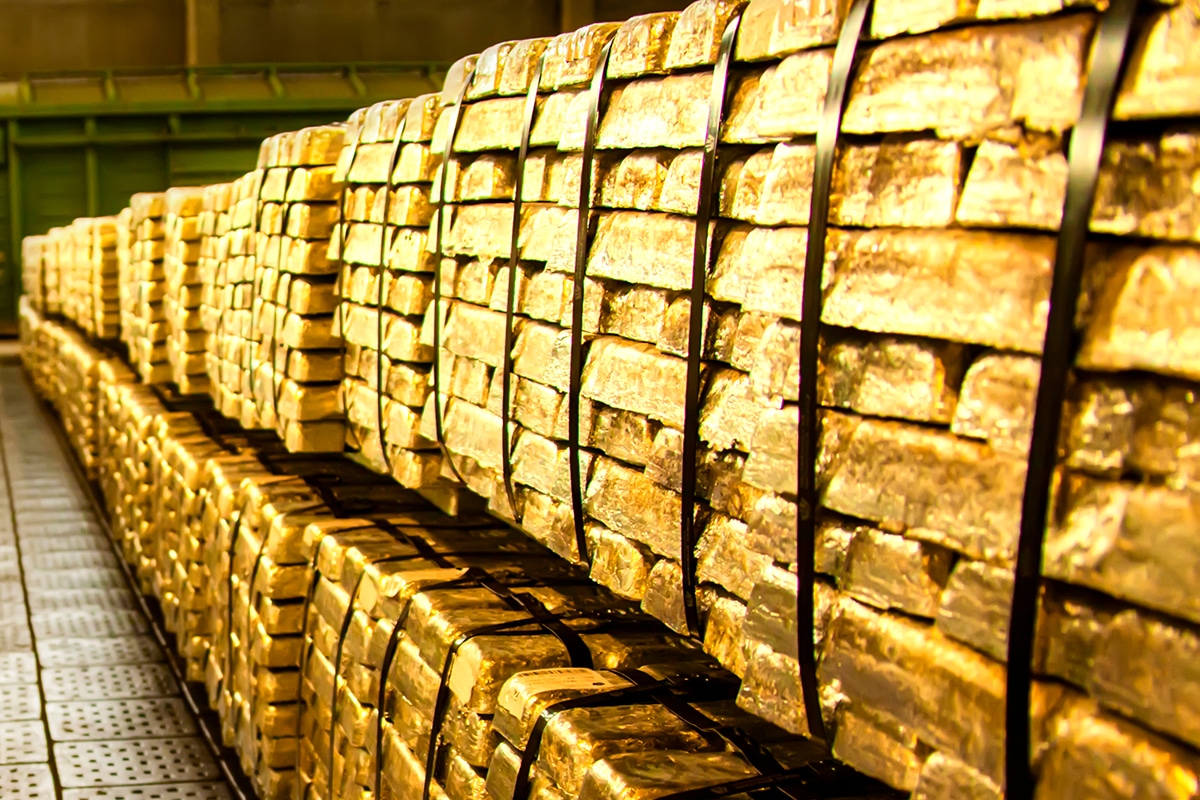During the global market meltdown earlier this month, gold and silver prices dropped, despite being a safe-haven asset during market instability.
However, gold prices had risen over the past two years as investors sought protection from inflation.
Given these current trends, should you really invest in gold right now? Here’s what experts told Arabian Business.
Gold fares well during recessions, say UAE experts
According to data from the World Gold Council, the London Bullion Market Association (LBMA) gold price averaged a record $2,338 per ounce in the second quarter of 2024.
This represents a significant 18 percent increase year-over-year and a 13 percent rise quarter-over-quarter.
The surge in gold prices throughout Q2 was primarily driven by strong over-the-counter (OTC) investment, which accounted for 329 tonnes of demand, and continued central bank purchases, which increased by 6 percent year-over-year to 184 tonnes.
“Gold typically fares well during recessions, delivering positive returns in five out of the last seven recessions. It’s important to note however that a recession is not a prerequisite for gold to perform. A sharp retrenchment in growth is sufficient for gold to do well, particularly if inflation is also high or rising,” Andrew Naylor, Head of Middle East and Public Policy, World Gold Council said.
Echoing the sentiment, Mike Coady, Chief Executive Officer of Skybound Wealth Management, added that gold has “historically been perceived as a safe-haven asset, and this recent downturn has reaffirmed that status.”
“As stock markets have experienced volatility, investors have turned to gold, driving its price upward. This is a common trend observed during periods of market instability, where the demand for more stable assets increases,” he said.

However, Naylor explained that gold has exhibited “resilience amid the recent stock market downturn and has held up better than some other assets, although it did trade a few percentage points lower on August 5.”
He went on to explain that this performance is part of a broader trend of gold’s strong price performance throughout the year.
The precious metal reached new record highs during this period, including a peak of $2,427 per ounce in May. This impressive performance has outpaced most major asset classes, with gold rising by 12 percent year-to-date and trading above $2,300 per ounce for the majority of Q2.
Historical trends support gold’s reputation as a reliable safe-haven asset during periods of stock market volatility.
“During the 2008 financial crisis, for instance, gold prices surged as investors flocked to the metal for stability amid widespread market turmoil,” he said, adding that this pattern appears to be repeating itself in the current environment, with gold prices reaching new highs partly driven by ongoing geopolitical tensions, economic uncertainties, and fluctuating stock markets.
But, what is the potential for gold as a safe-haven asset in the current economic climate?
“In the current economic climate, characterised by geopolitical tensions and inflationary pressures gold’s potential as a safe-haven asset remains robust. Its ability to retain value when other assets depreciate makes it an attractive option for risk-averse investors. However, it is crucial to consider gold within the broader context of a diversified financial plan to mitigate risks effectively,” Coady said.
Speaking to Arabian Business, Scott Livermore, Chief Economist and Managing Director at Oxford Economics Middle East DMCC said, regional equity markets have been “caught up in volatility in response to heightened regional geopolitical tensions and exaggerated fears of recession in the US.”
He added that the US July employment report “came on the heels of a weaker-than-expected ISM manufacturing survey, fuelling financial markets’ recession concerns.”

“The rise in the unemployment rate in July fanned concerns because it triggered the so-called Sahm rule, which uses the jobless rate to signal a coming recession, he said, adding that Oxford Economics is “sceptical of this because the rule only correlates with a recession when the increase in the unemployment rate is primarily due to layoffs, which is not the case now as unemployment was also boosted by temporary factors and new entrants.”
However, Livermore warned that in case the US does slide into recession, or there is greater conflict in the MidEast “GCC economies will be caught up in the repercussions but that is not our central view and fundamentals remain strong, especially in Saudi Arabia and the UAE.”
Moreover, according to Naylor, central banks’ gold buying trends further underscore the metal’s role as a safe-haven asset.
“[Central banks] have been consistent net buyers of gold for 14 years, stepping up their allocations significantly since 2022.”
The World Gold Council’s annual central bank survey provided the top three reasons cited for holding gold include its long-term value (88 percent), performance during a crisis (82 percent), and its role as an effective portfolio diversifier (76 percent).
“Given the geopolitical and economic uncertainty we’ve seen in the last two years, it’s hardly surprising that many central banks have opted to continue adding gold to their reserves,” Naylor said.
Gold’s performance during periods of economic uncertainty or recession is particularly noteworthy, Naylor pointed out, adding that gold has delivered positive returns in five out of the last seven recessions.
“It’s important to note that a recession is not a prerequisite for gold to perform. A sharp retrenchment in growth is sufficient for gold to do well, particularly if inflation is also high or rising,” he said.

There are many other factors that influence gold prices other than stock market performance
Both experts further emphasised that multiple factors beyond stock market performance influence gold prices. However, Coady outlined several key factors:
- Inflation: Higher inflation rates can erode the value of fiat currencies, making gold more attractive.
- Geopolitical Tensions: Uncertainty arising from geopolitical events often leads investors to seek the stability of gold.
- Currency Fluctuations: The strength of the US dollar inversely impacts gold prices, as gold is dollar-denominated.
“Despite these advantages, there are risks to consider. Gold does not generate income like dividends or interest, and its price can be influenced by speculative trading,” he said.
Naylor added that the potential for interest rate cuts is another factor that could significantly impact gold prices.
“Lower interest rates reduce the opportunity cost of holding non-yielding assets like gold, making it more attractive to investors.”
He added that with a long-awaited rate cut from the US Federal Reserve on the horizon, inflows into gold ETFs have increased thanks to renewed interest from Western investors.
“A sustained revival of investment from this group could change demand dynamics in the second half of 2024,” Naylor said.
Coady agreed by saying that potential interest rate cuts could further impact gold prices. “Lower interest rates reduce the opportunity cost of holding non-yielding assets like gold, making it more appealing. Additionally, rate cuts can weaken the currency, further boosting gold’s attractiveness as a store of value,” he said.
Despite the apparent advantages of investing in gold during periods of market volatility, both experts stressed the importance of considering the associated risks.
Coady pointed out that gold does not generate income like dividends or interest, and its price can be influenced by speculative trading.

“It’s essential to approach gold as part of a well-rounded investment strategy rather than a standalone solution,” he advised.
Naylor and Coady both emphasised the importance of incorporating gold into a diversified investment portfolio. Looking ahead, the experts see continued potential for gold in the current economic landscape.
“With a long-awaited rate cut from the US Fed on the horizon, inflows into gold ETFs have increased thanks to renewed interest from Western investors. A sustained revival of investment from this group could change demand dynamics in the second half of 2024,” Naylor concluded.









